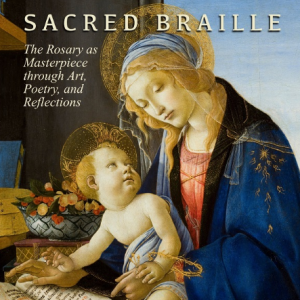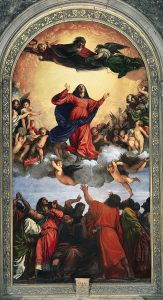The Feast of the Assumption
On this Feast of the Assumption, I give you some art, music and poetry on the subject. There are many great works of art to choose from on this theme, but I chose Titian’s “Assumption,” because I had the great privilege of seeing this painting up close when in Venice. It was even more beautiful in person.
It was December, and when I left the basilica, it began to snow very gently, white flecks falling softly into the canals and among the gondolas. Such beauty, befitting the subject. I was struck by the presence of snow falling to the earth below, having just beheld one of the greatest paintings of Mary being bodily lifted to heaven. It was as though the snow was a reminder of Mary’s purity and grace, falling like white rose petals on the basilica steps. Beauty is the word that comes quickest to mind when thinking of the Assumption.
In the words of St. Anthony of Padua, who wrote today’s featured poem, she is “beauty of the angels and the grandeur of the saints.” But my favorite line of St. Anthony’s poem comes in the last stanza: “…the Blessed Virgin,/ who was the dwelling of the Savior,/ has been assumed bodily into heaven.” The dwelling of the Savior, indeed. Mothers are their children’s first homes. I will write a follow-up piece tomorrow about the idea of “home,” that will tie nicely into that incredible thought. Mothers are their children’s first homes. What joy Christ must have felt to have his mother with him, once more, in heaven. With her there, he was finally completely home.

